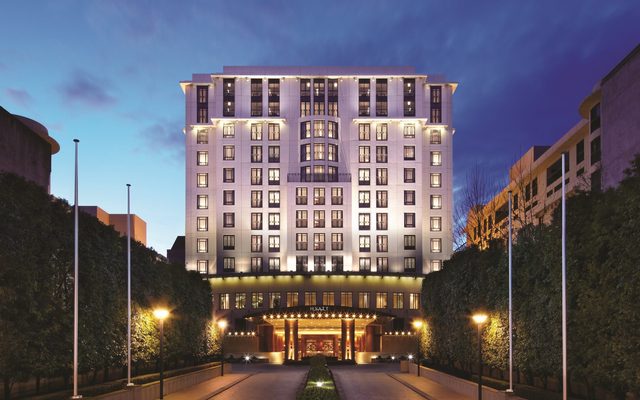This article is from the Australian Property Journal archive
GLOBAL investors have resurfaced and spent $US132 billion in the first half of 2010 up from $US76 billion the previous year and Australia continues to attract strong interest, according to Jones Lang LaSalle.
JLL’s latest Global Capital Flows research shows transactions nearly doubled in the first half of 2010 compared to the same period a year ago and shows signs of returning to pre-crisis levels.
After reaching a low of 31% of total volumes in the first half of 2009, cross-border activity is now back above 40% (43%), a trend set to continue for the remainder of 2010.
|
Year |
Total |
Cross-Border |
|
2003 |
USD 354 billion |
USD 90 billion |
|
2004 |
USD 393 billion (+11%) |
USD 118 billion (+31%) |
|
2005 |
USD 495 billion (+25%) |
USD 166 billion (+40%) |
|
2006 |
USD 700 billion (+41%) |
USD 299 billion (+80%) |
|
2007 |
USD 759 billion (+8%) |
USD 353 billion (+18%) |
|
2008 |
USD 378 billion (-50%) |
USD 159 billion (-54%) |
|
2009 |
USD 209 billion (-44%) |
USD 79.5 billion (-50%) |
|
2010 H1 |
USD 132 billion (+73%) |
USD 56.8 billion (+140%) |
According to JLL, UK has been the most popular destination with $US7 billion invested, whilst Germany replaces the United States as the second most popular destination.
The US was in third place (from second in H1 09) despite a doubling in transactions from $US2.2 billion to $US4.3 billion.
Japan, Australia and Sweden feature in the top 10 for H1 2010’s most popular destinations for cross-border investment, having not featured in H1 2009.
JLL Australian director of international investments Simon Storry said research confirms the view that Australia remains a destination of choice for foreign investment.
“The figures show that cross-border investment in Australia increased more than five-fold in 1H 2010 at $US1.8 billion, compared to $US319 million in 1H 2009.
“We expect Australia to continue to be on the radar of foreign investors for the remainder of this year. Commercial real estate in Australia has offered solid and stable returns and an attractive environment for investors seeking stability in their globally diverse portfolios,” he added.
The market continues to be dominated by major and mature institutional investors from the world’s most liquid capital sources; global funds (which raise capital in multiple regions) were the largest investor group, followed by German, Singaporean, Dutch, Middle Eastern, British, South Korean, American, Hong Kong and Swedish sources.
Global funds (which raise capital in multiple regions) were the most active inter-regional purchasers in H1 2010 and doubled the amount they invested compared to H1 2009. Middle Eastern investors remained the second largest inter-regional purchasers also more than doubling their investments in H1 2010 compared to the same period in 2009.
US investors increased their inter-regional investments by 48% year on year and South Korean investors were fourth most active inter regionally in H1 2010 with $US0.8 billion having not featured in the top 10 Inter-regional purchaser list in 2009.
German investors on the other hand have been less active on the inter-regional front, with volumes falling from $1.1 billion in H1 2009 to $0.5 billion in H1 2010; this in part reflects a more conservative approach whilst German Fund legislation is under review.
Although the office sector remains dominant, it represented less than half (48%) of global transaction volumes in H1 2010 (compared to 53% in H1 2009) as retail, hotel and industrial activity picked up with investors diversifying their investments.
Europe had the highest volumes of cross-border activity in the first half of 2010 (over 54% of European transactions were cross-border, of that 24% was inter-regional).
The Americas transactions, historically driven by strong domestic investors, recorded the highest proportion of inter-regional investment of all three regions (over 35% of all the Americas transactions were inter-regional). Asia Pacific transaction volumes were up 40% in the first half of 2010 compared to the first half of 2009; 69% of transactions in Asia Pacific were domestic and, of the 31% cross-border transactions, 15% were inter-regional.
For the remainder of the year, JLL’s head of international capital Arthur de Haast said mixed economic news plus longer transaction processes due to investor due diligence may mean that investment volumes do not continue to grow at levels seen in the first half 2010.
“However, full year volumes will be between $US275 – 300 billion for 2010, significantly ahead of 2009 ($US209bn), with cross-border investors continuing to be very active,” he predicted.
Australian Property Journal



